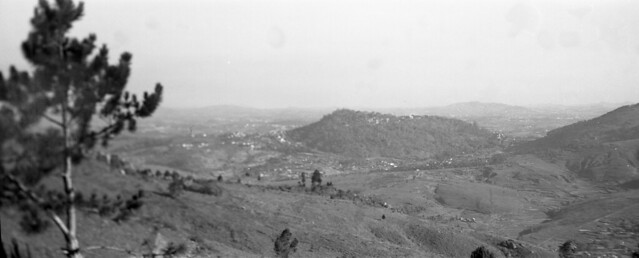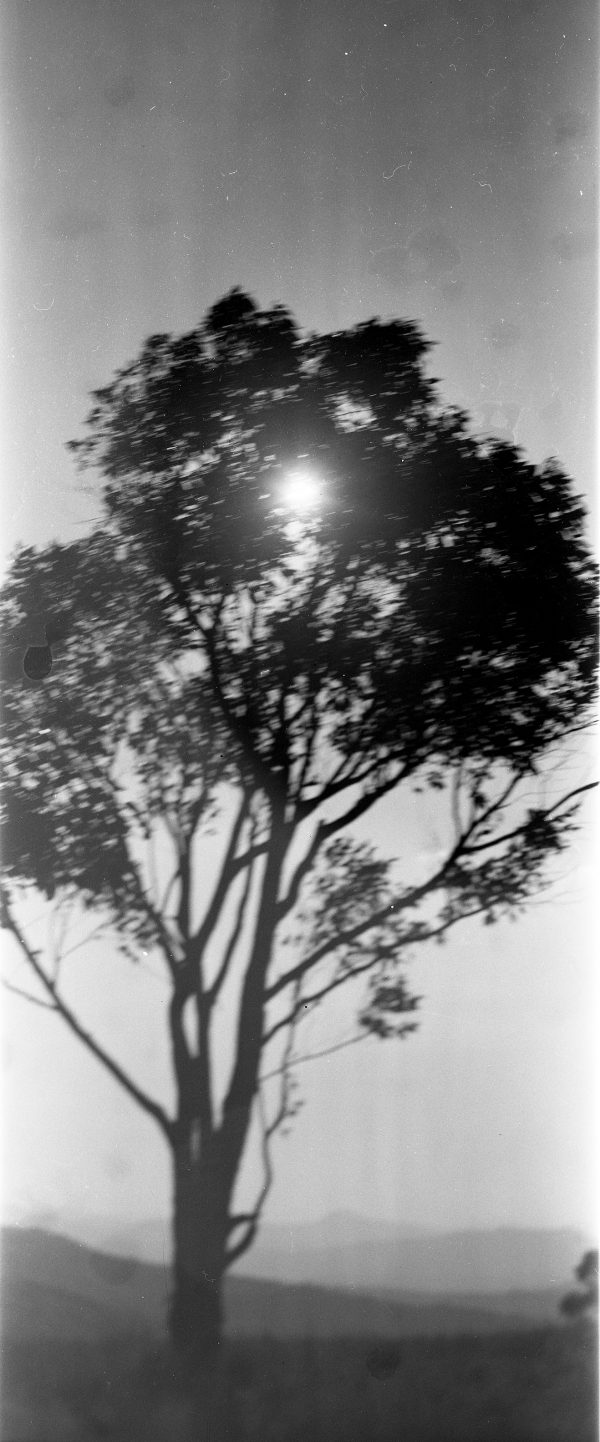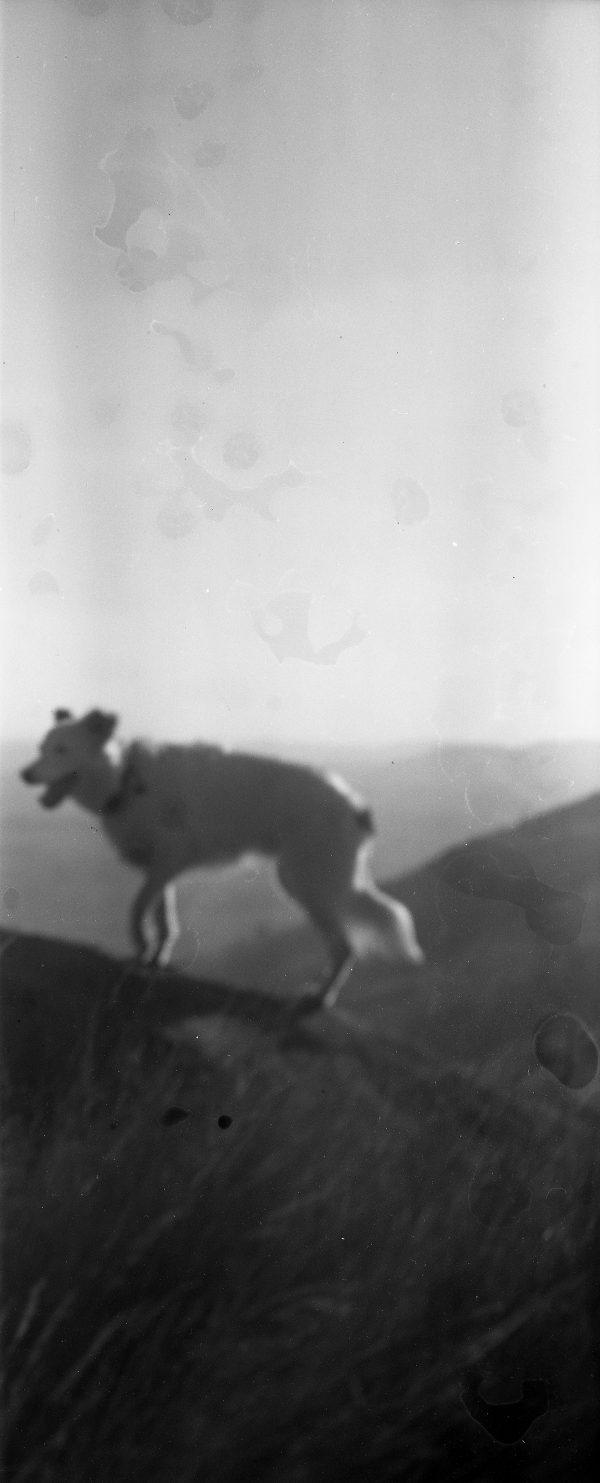This was once a beautiful camera. It’s made of sheet metal painted black and covered in leatherette, with a wooden baseboard and shiny nickel and black metal parts, and a little brass, complemented by red leather bellows. It folds open to sit horizontally on a shelf, or can be folded to be carried with its genuine leather strap.
Mine has seen better days. The leatherette is peeling off in places, and has been missing entirely from the front long enough that the black paint covering the case has been scratched off in many places. The viewfinder won’t stay up for some reason, but the bellows are intact, the shutter appears to work perfectly, and the leather strap is even still there.
I struggled a bit to identify what kind of camera this was. Often the model name is engraved inside the cover. In this case I finally discovered the model name engraved in iny letters below the shutter assembly.
To open the camera, you depress a button on top which releases a latch and the cover drops open. Though it’s tempting to want to squeeze them when the camera gets stuck (from age, you pull the camera in and out of its case by grasping the tabs below and to the left and right of the shutter. You focus by setting your distance from the subject using the lever under the shutter/lens assembly – shown to the left on the photo above. You can either select 6, 10, 25 or 100 feet. The shutter speed is not adjustable, but probably around 1/50s – it’s a Rapid Rectilinear Lens with what I’m guessing is a ball bearing shutter with a pneumatic remote. You can choose apertures of f/4, 8, 16, 32, 64 and f/128. Given that film speeds when this camera was manufactured, from 1908 to 1912, were almost certainly slower than the ISO film I was using (probably ISO 25 or 50), the f/128 probably got some use back in day when it was sunny. With 400 speed film, you’re limited to somewhat overcast or cloudy days because the shutter speed is so slow. I don’t have a phone-app light meter that handles these aperture sizes, so I just guessed the best I could.
Like many early 1900s folders, offers an “I” (instant), “T” (time) and “B” (bulb) setting. I’ve never tried leaving the shutter open – I suppose if I found some slow film it might be worth a shot.
Which brings me to my results.
Not too bad. In the mid-range, everything is pretty sharp; but of course up close and near the horizon things get fuzzy.
This camera uses 116 film, which is 70mm wide. This means you need to acquire a second film spool and in a film bag or a very dark room, spool a roll of 120 film onto it. Ideally that spool will come with a roll of backing paper, so that your 120 film, which is a few millimeters narrower than the spools, won’t end up exposed on the edges if it winds unevenly, which can happen on these older cameras.
A common issue with old folders using this kind of viewfinder is that the mirror has become corroded. You hold the camera at waist level and look down into it, and if all goes well you’ll see your image reflected nicely in the viewfinder so you can frame it. Normally a few millimeters here and there don’t matter. But in my case, the viewfinder is pretty corroded and framing becomes guesswork. So on the long dimension I was pretty good at getting what I wanted onto the frame, but on the narrow dimension, not so much.
I’ll share two other photos from this roll to show where I had problems.
You can really see the water spots on these. But because these aren’t really keepers, given they’re blurry, I’m not going to bother trying to clean them.
As an overall assessment, if you can find one of these with the leatherette intact, it looks really nice on a shelf. Generally it’s the leather that goes bad, or the shutter sticks, so I got pretty lucky as someone who likes to shoot with the old cameras I collect. But the corroded mirror is kind of a showstopper – it takes some of the fun out of shooting since you’re really just pointing the camera in the (generally) right direction and hoping. The viewfinder’s constant flopping downward is irritating and could probably be fixed with a spring, but given there’s no clear way to take it apart to at least try and clean the mirror, that would be one thing to check. Other than that, the clear lens and the flexible shutter and aperture options give you plenty of options.





